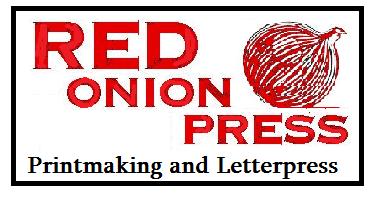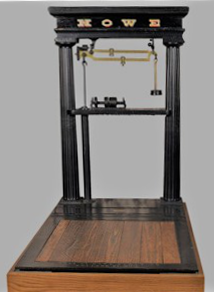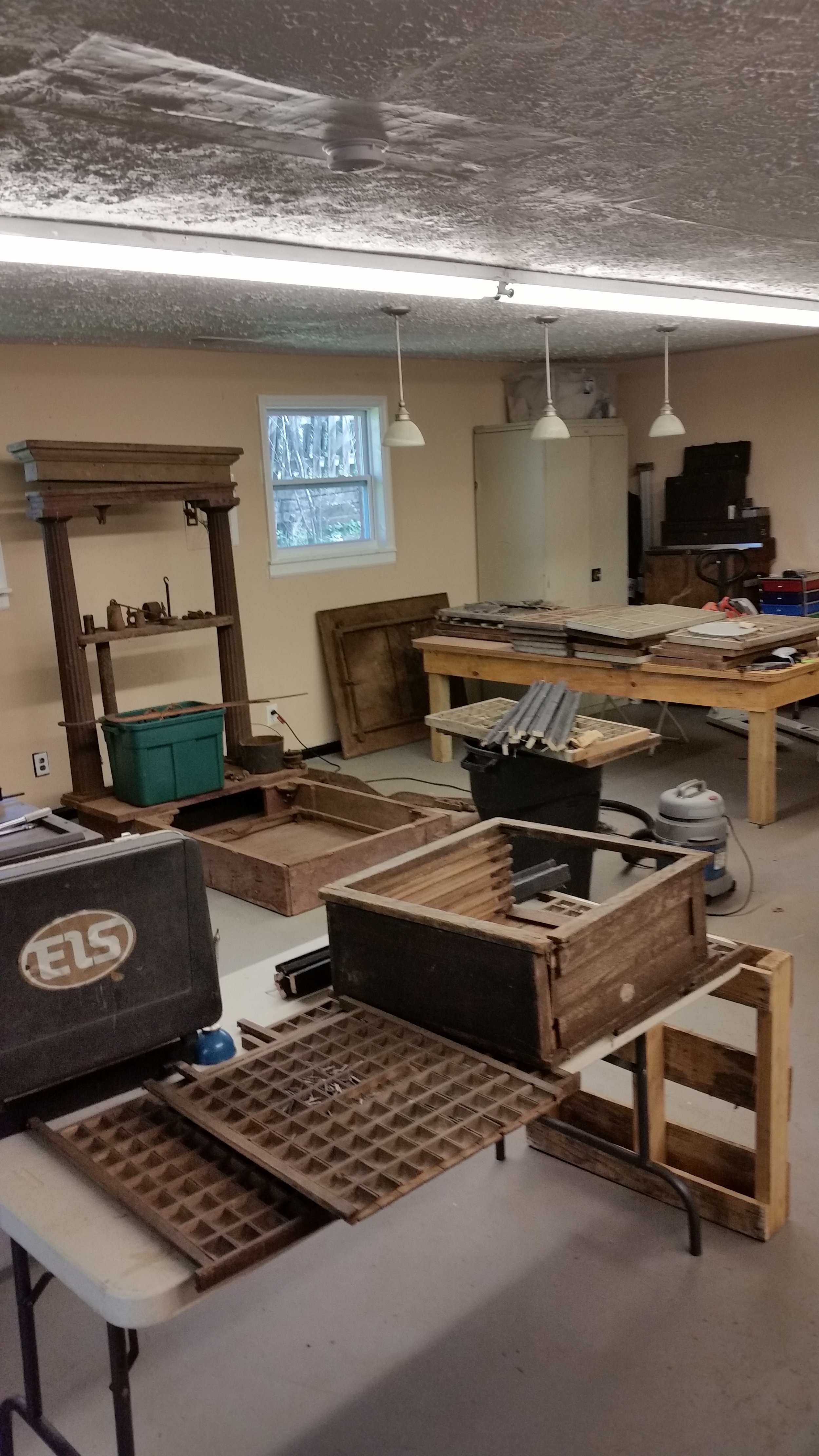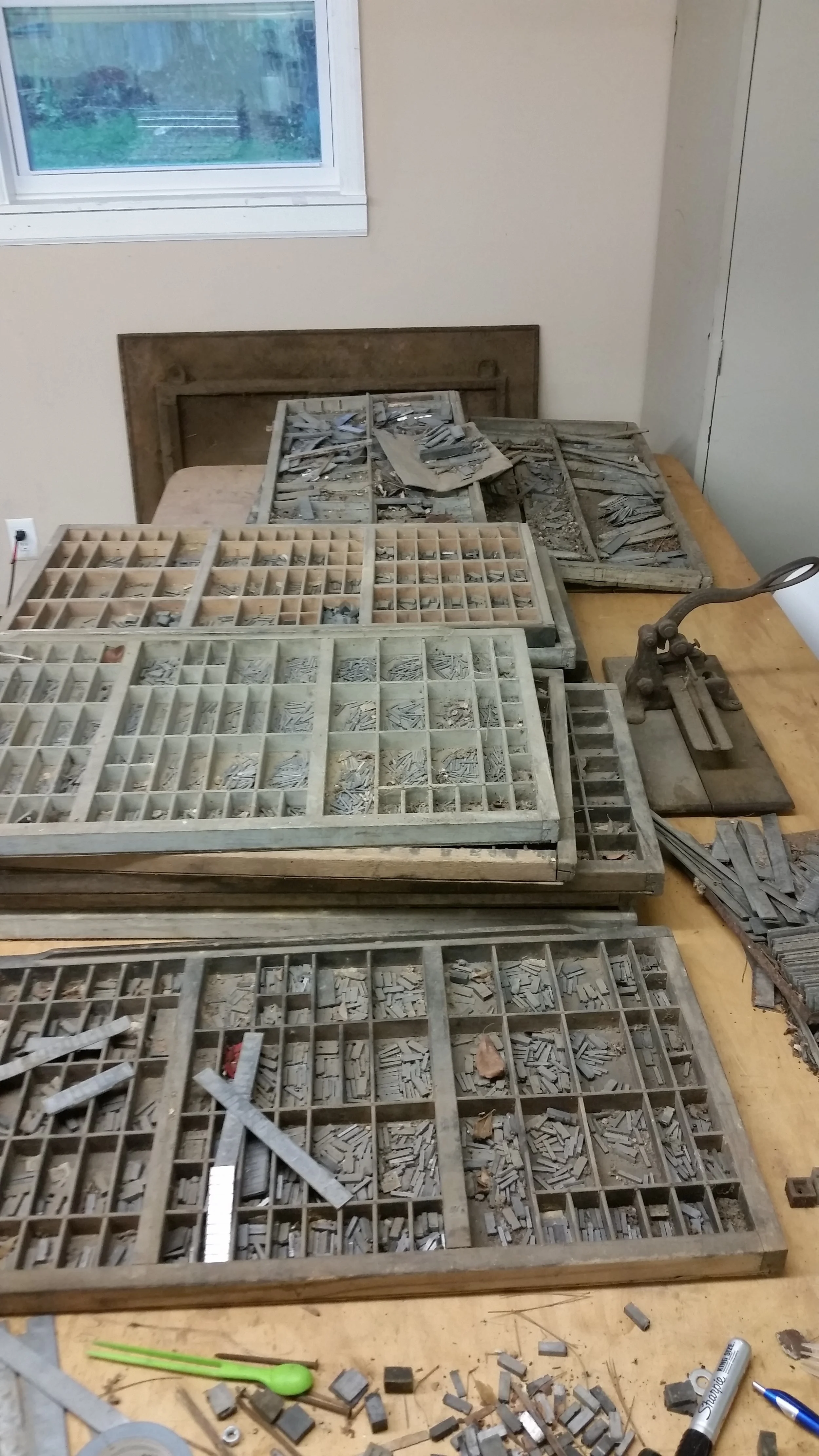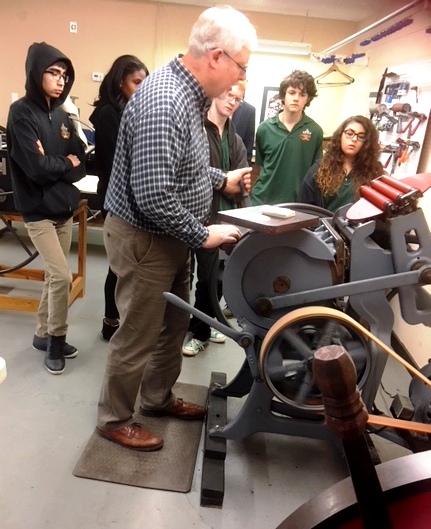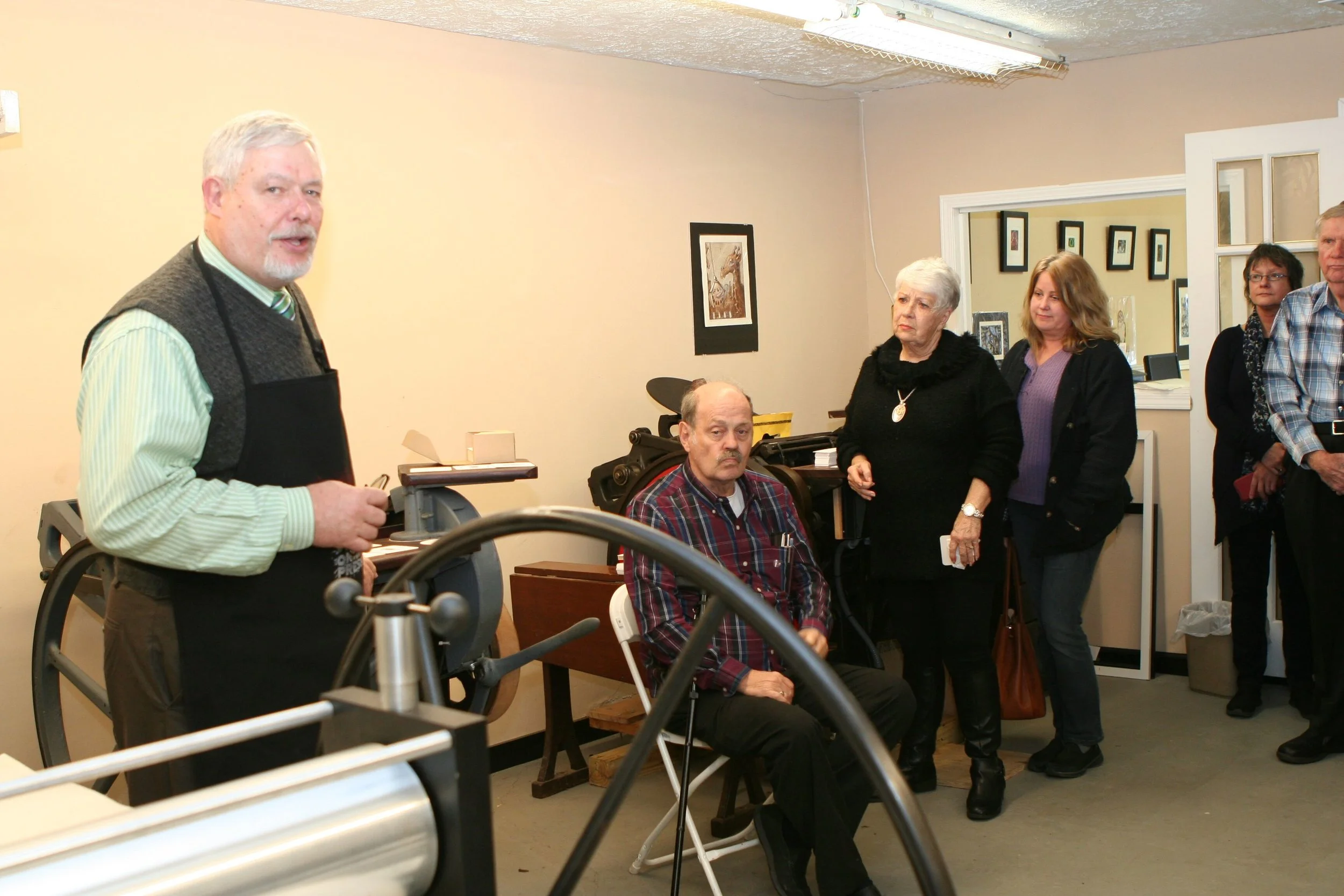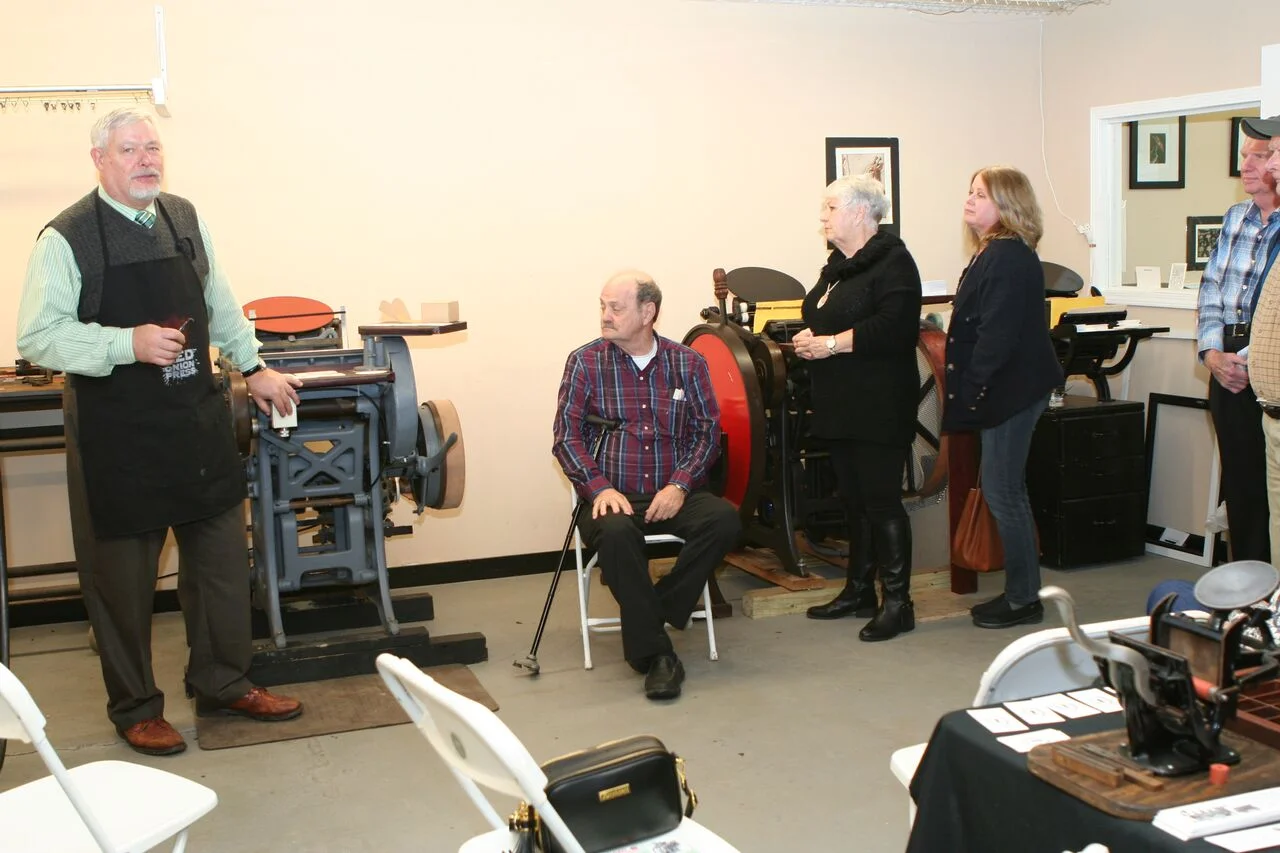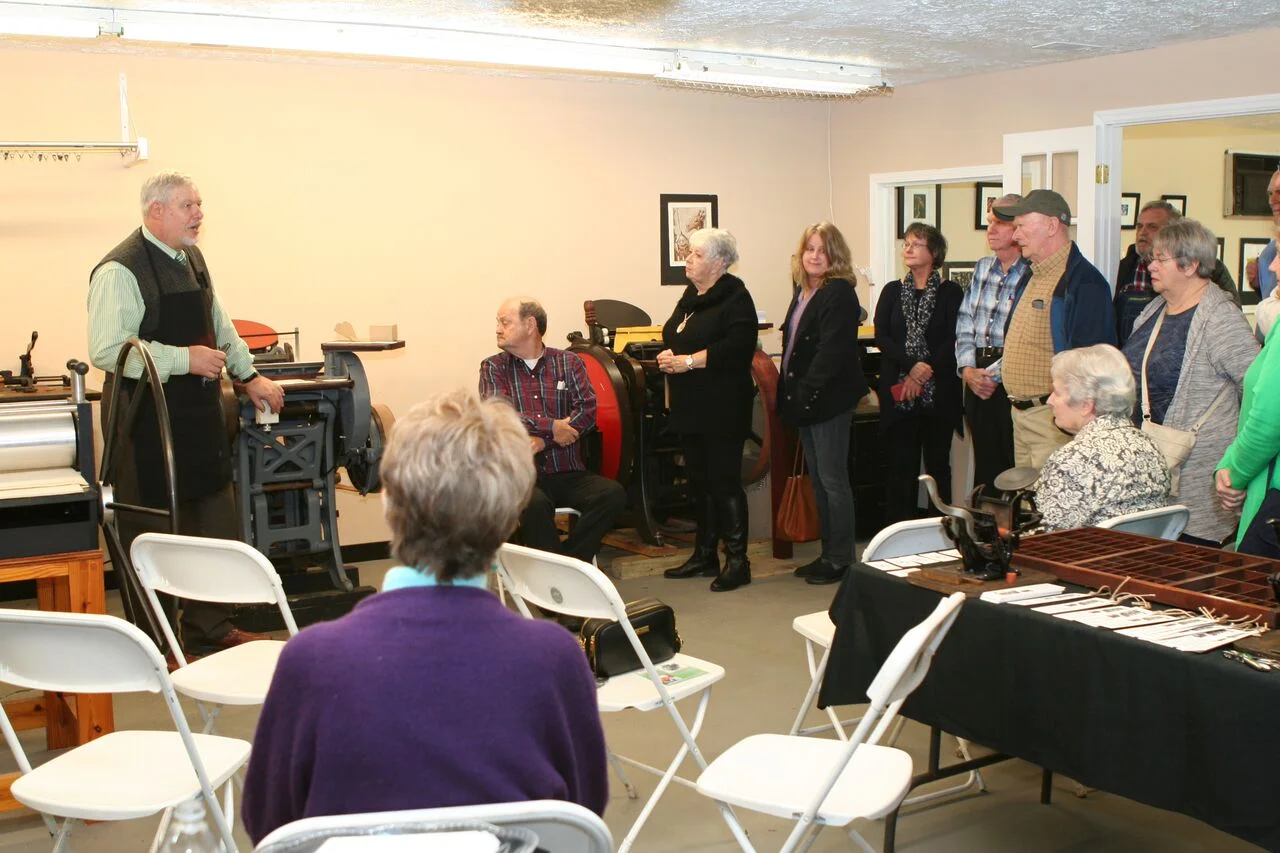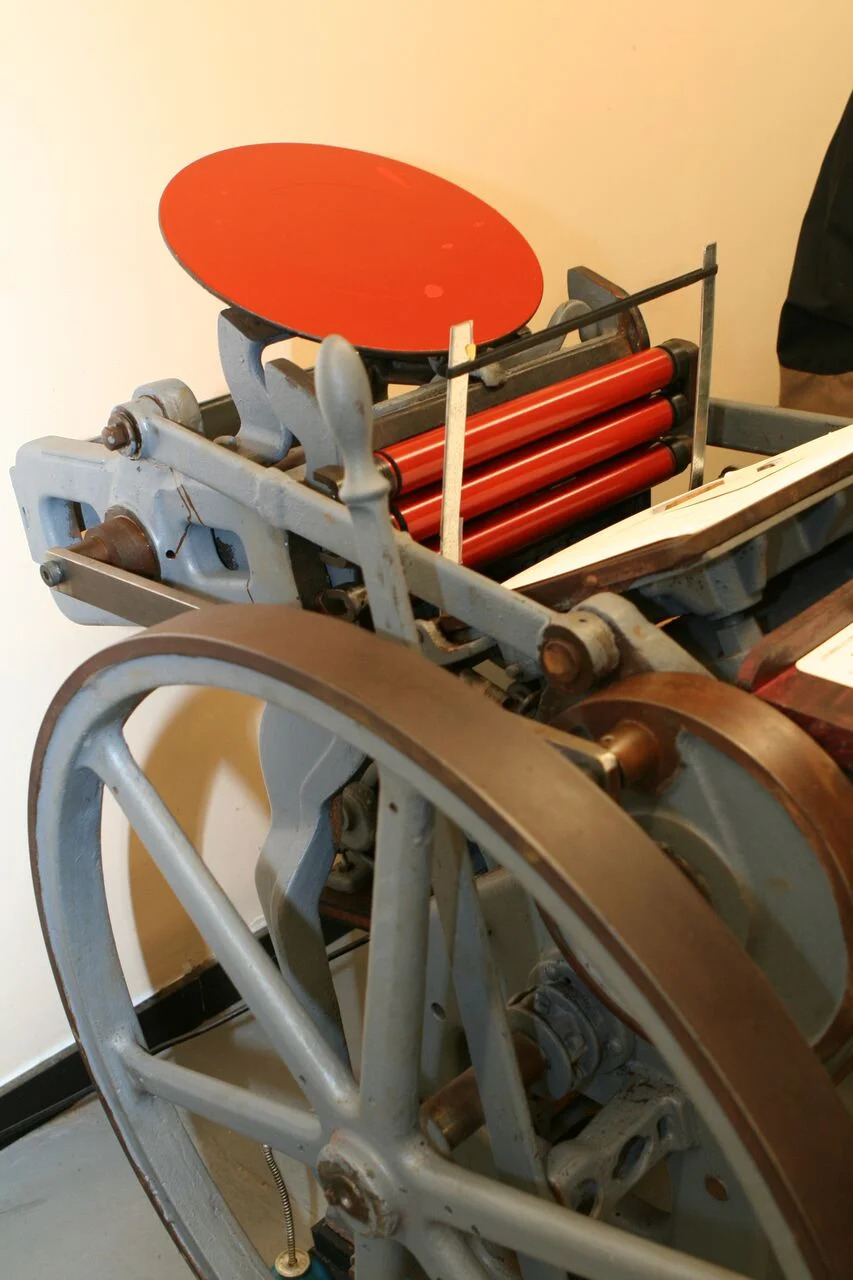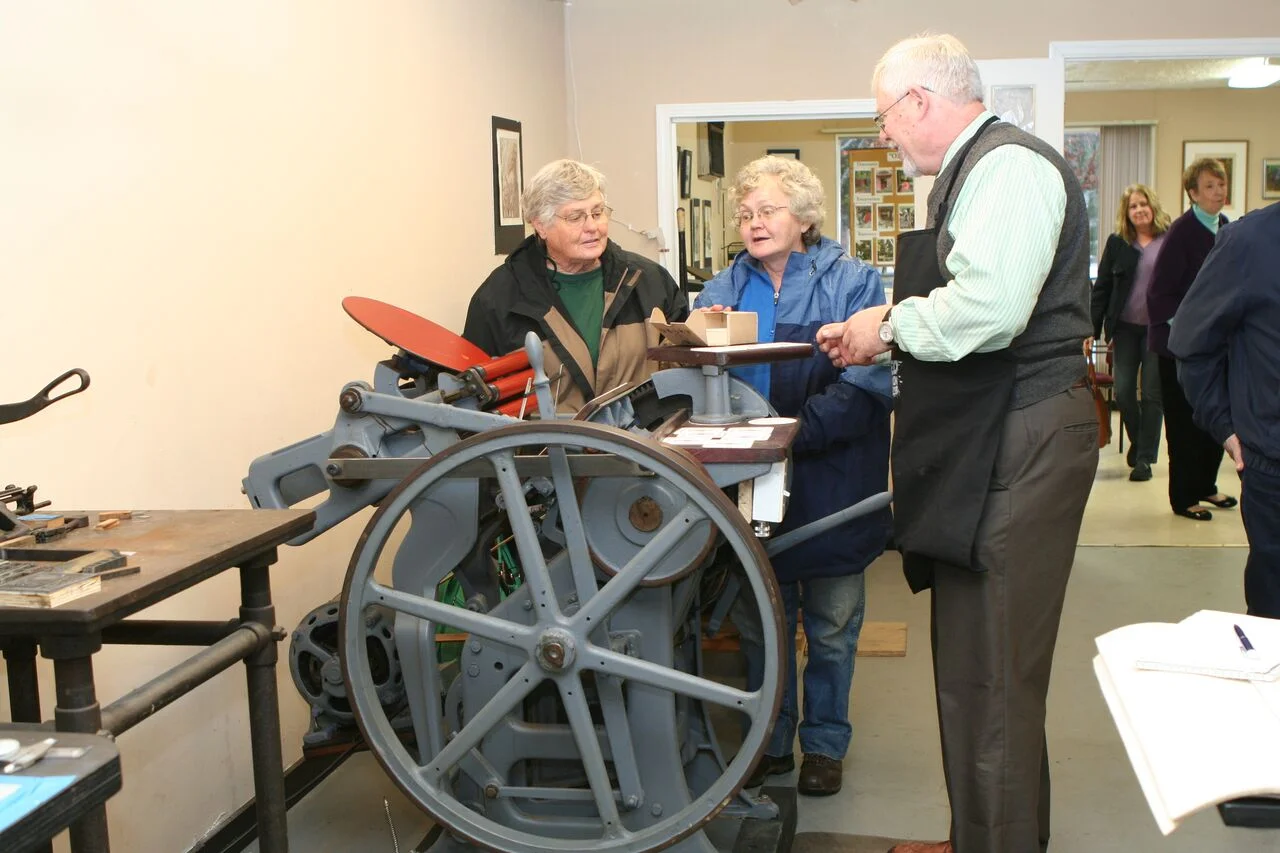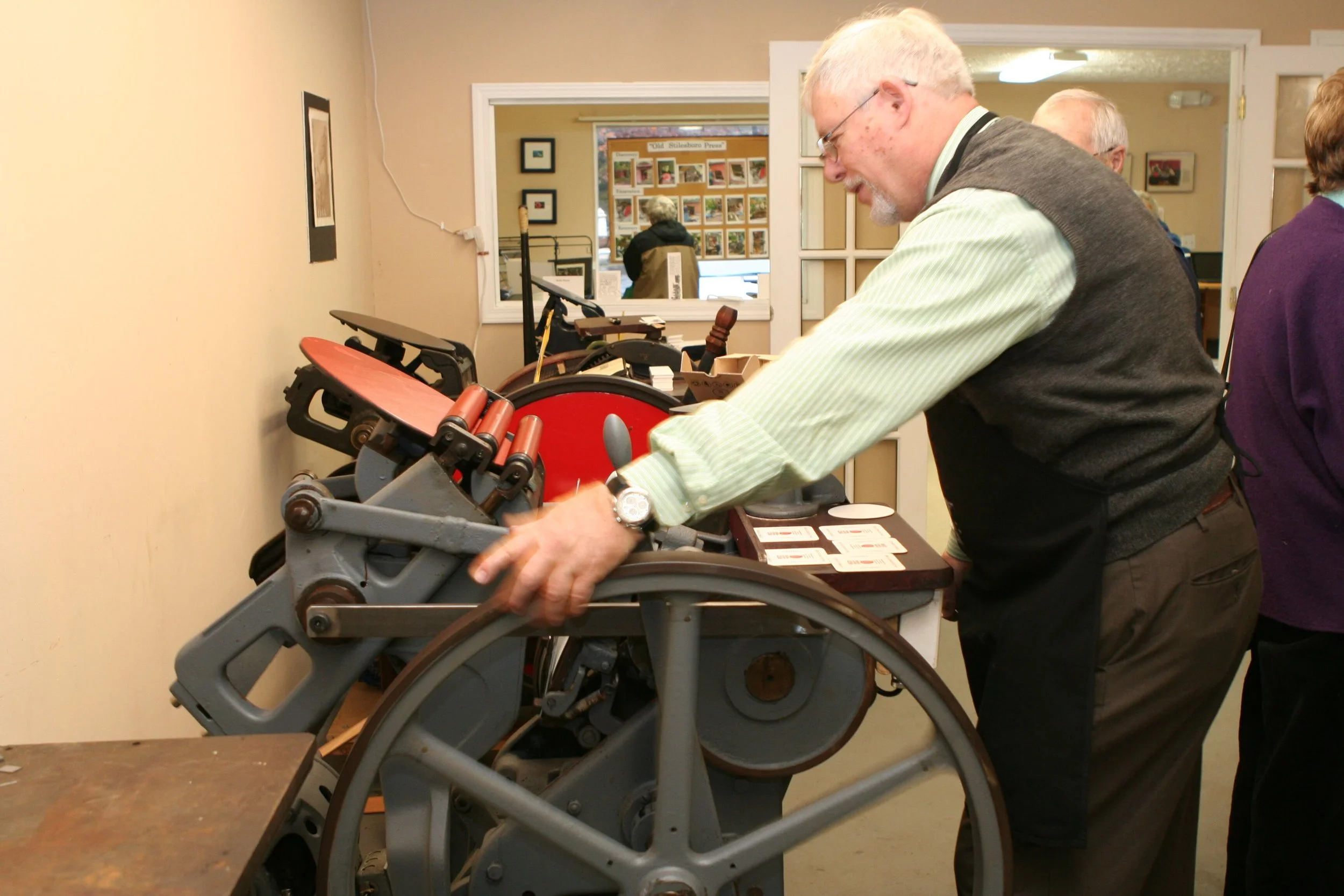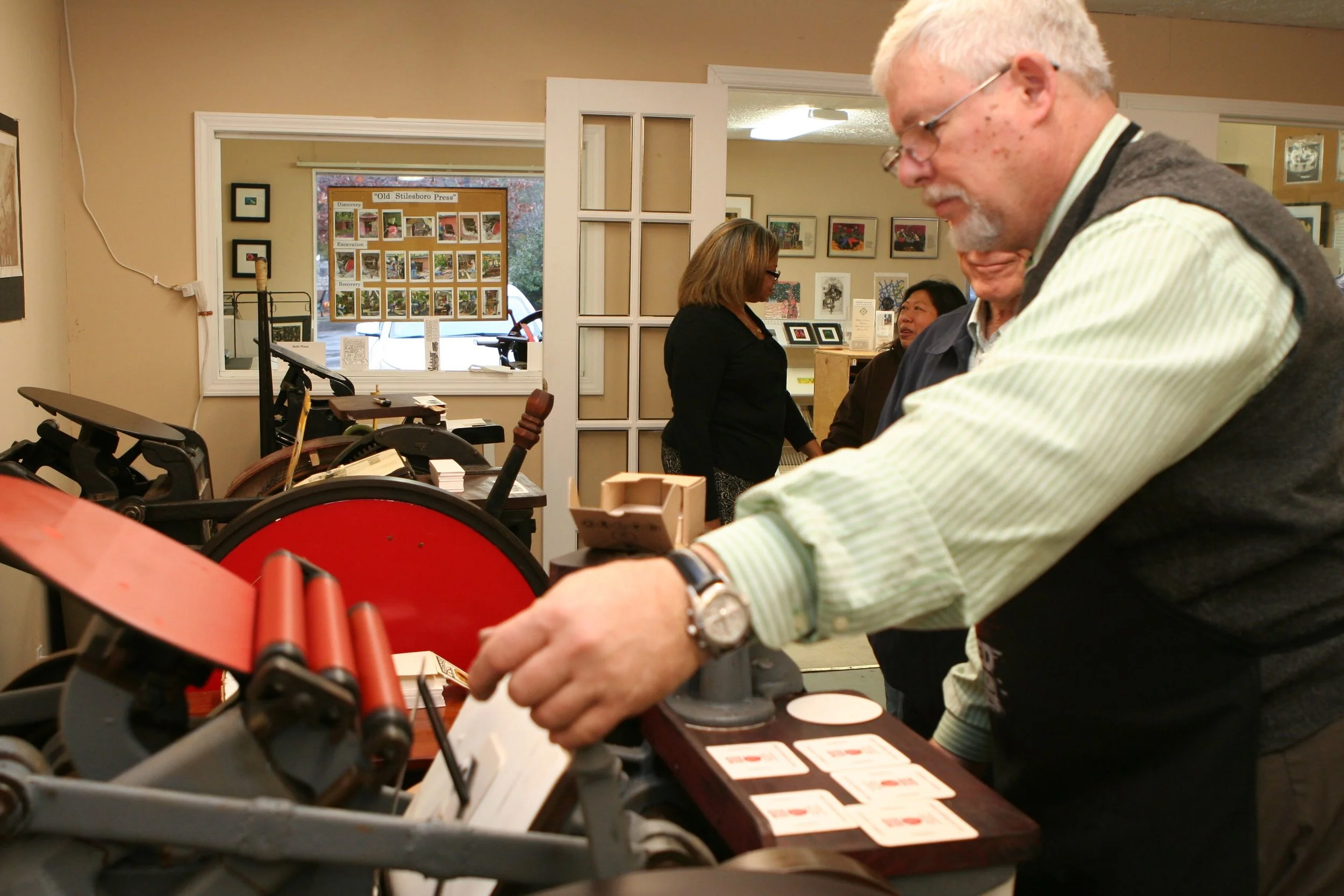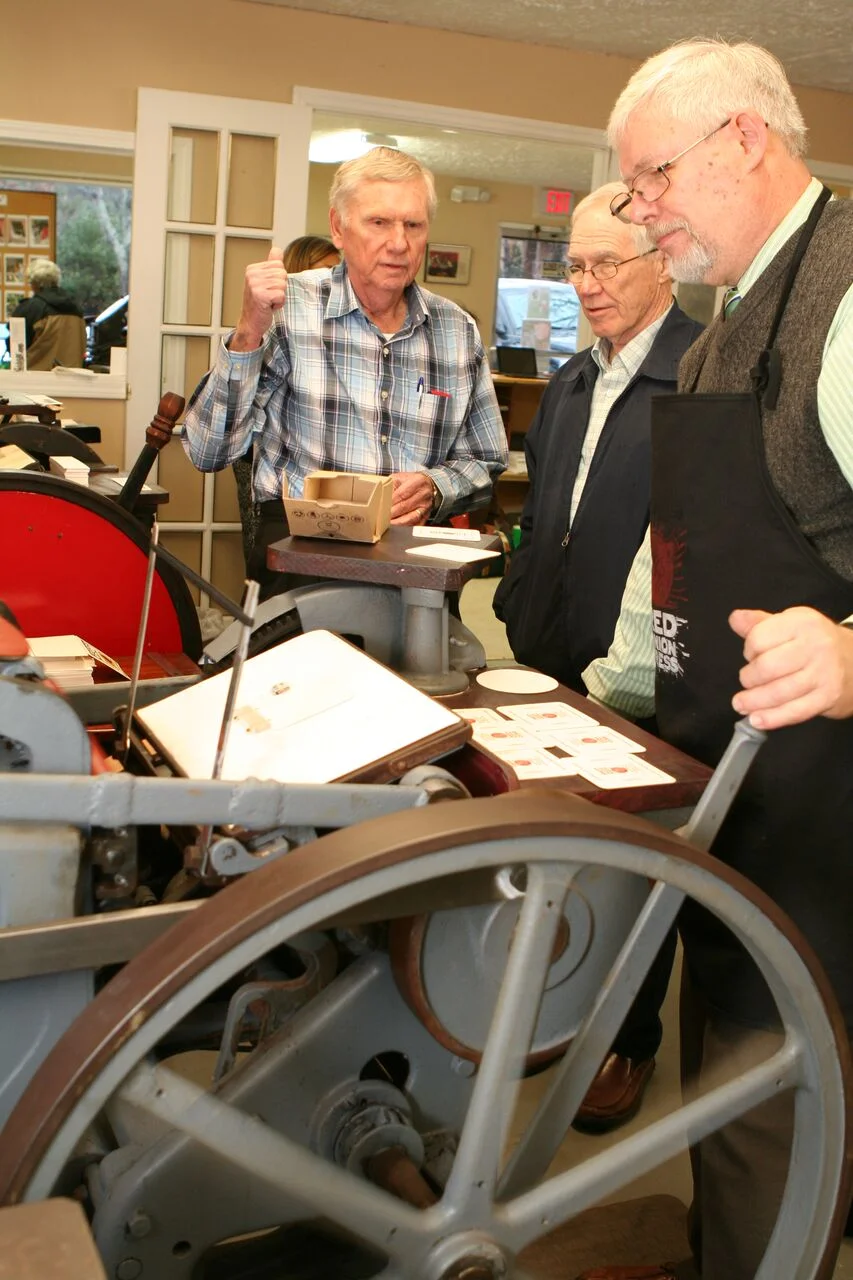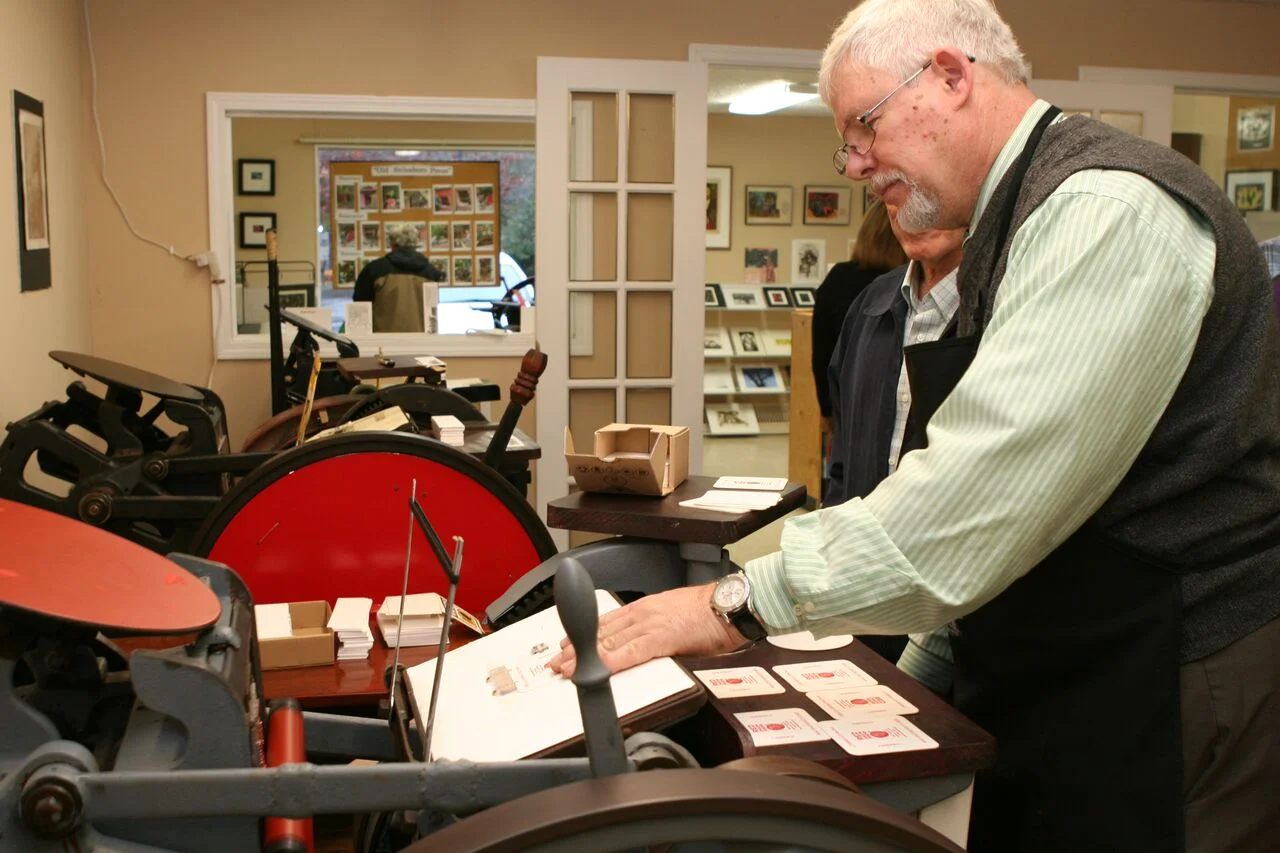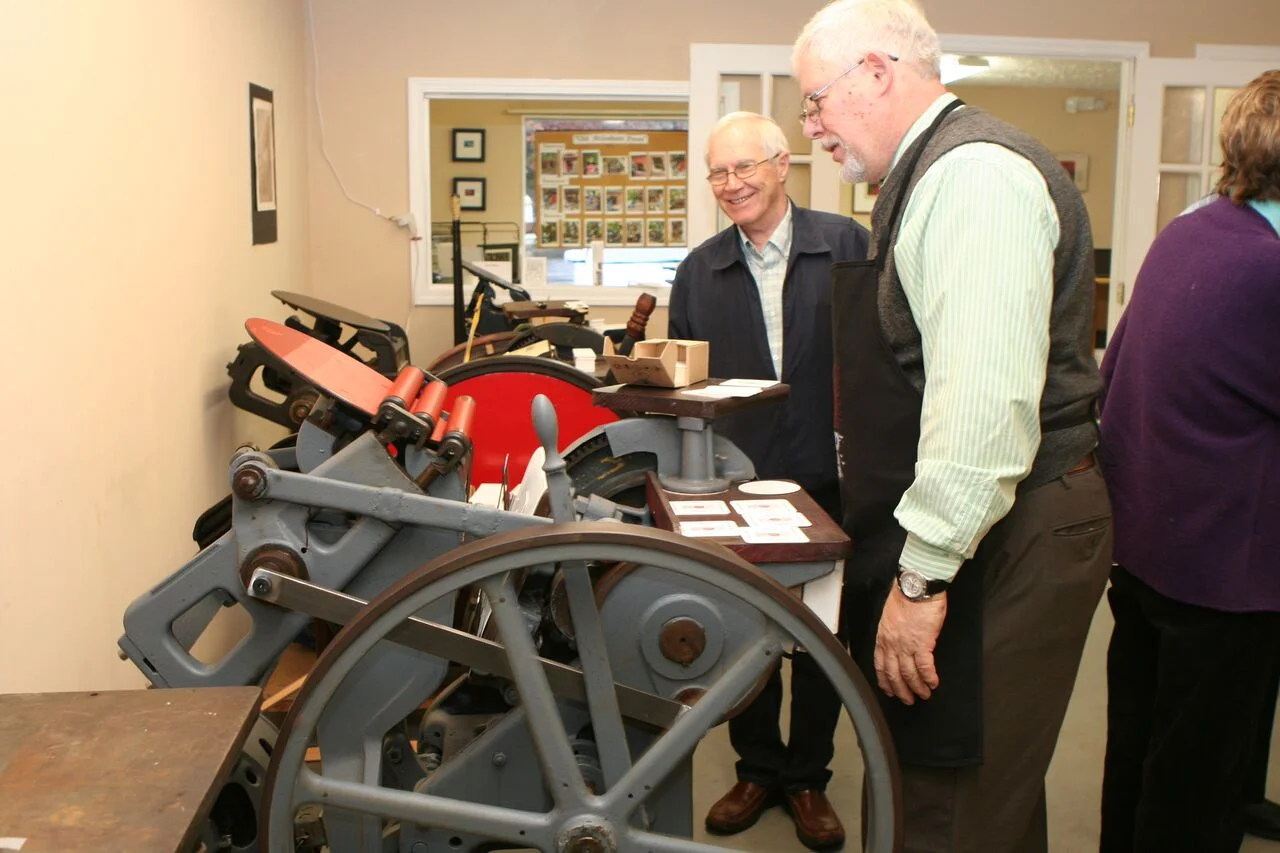Poppi, Hugh and I drove up last weekend to retrieve Sam Galloway's press and more than 20 drawers of movable type font donated to the Red Onion by Galloway's family. We knew this was going to be a challenge, because we had seen how the press had been trapped under the roof of a tree struck demolished house. (All photos by Brian Gaukel)
Last year we had rescued a letterpress in Acworth, that was found in an old shed on Old Stilesboro Road. After learning that the press had been one of two letterpresses that Sam Galloway had in a printshop that he operated in Kennesaw in the 1960's and later in Acworth. In 1985 Sam Galloway had moved one of the presses to Summerville, leaving the second one behind with his son, James Galloway who was also trained as a letterpress printer. When Sam died suddenly, James and his wife Nena moved to Summerville, leaving the Old Stilesboro press behind. After seeing how the Red Onion recovered and restored his press, James Galloway offered the second press and all the type to the Red Onion.
The day of the move was cloudy, but the rain held off. James and his family gathered on the lawn to watch the careful roof demolition. This was a special day for James and his wife Nena; their 50th wedding anniversary!




